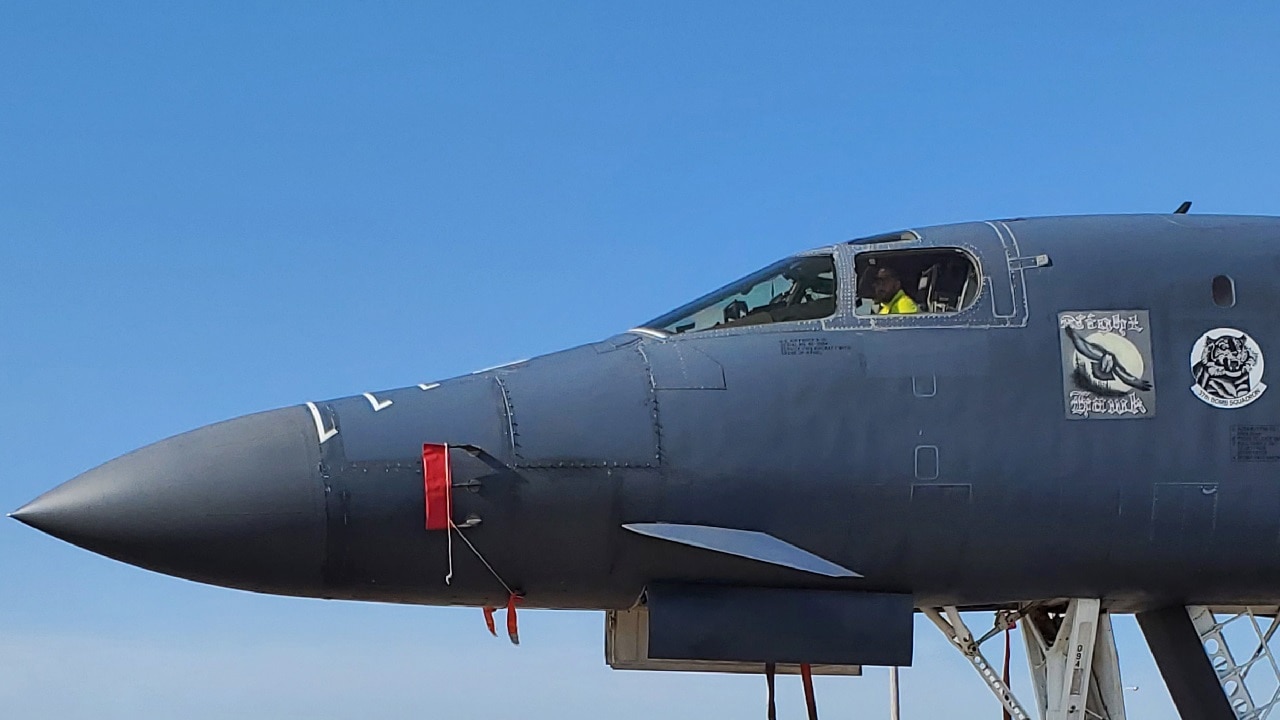The B-1 Bomber Was Grounded by Carter, Revived by Reagan – Until the development of the Lockheed Martin F-35 Joint Strike Fighter, the Rockwell International B-1 Lancer was by far the most expensive aircraft to be developed. The program was also by far the longest, most minutely studied and had the most costly gestation period. The aircraft was first envisioned in the 1960s as a platform that could combine high speed with the range and payload of the B-52.
B-1: A Short History
The B-1 Lancer was developed as a swing-wing bomber intended for high-speed, low-altitude penetration missions, and it took its first flight in December 1974.
It was a major leap forward in aviation design, and while smaller than the Boeing B-52 Stratofortress, its advanced engines and high-lift, variable-sweep wing allowed it to carry twice the weapon load at a much greater distance and higher speed.
Yet, the price tag remained an issue and newly elected President Jimmy Carter canceled the program in favor of ground-based ICBBs and submarine-launched ballistic missiles (SLBM). Not known at the time, was the fact that President Carter had also authorized the Advanced Technology Bomber (ATB) project that led to the development of the B-2 Spirit, the first true stealth bomber.
In June 1977 the B-1 program was canceled. However, four Rockwell International B-1As were still built and used for flight testing with the final flight made in April 1981.
Reagan Revived the B-1 Program
In October 1981, President Ronald Reagan then revived the program as the B-1B.
It first flew on Oct. 18, 1984, could operate at 60,000 feet, and had a range of more than 7,000 miles. The U.S. Air Force ordered one hundred B-1Bs in 1982, and the first B-1B aircraft was delivered to the Air Force at Edwards Air Force Base, Calif., in October 1984, just thirty-three months after the contract go-ahead. The last Rockwell B-1B rolled out of final assembly at Palmdale, Calif., on Jan. 20, 1988.
The B-1B went on to hold sixty-one world records for speed, payload, and distance. The National Aeronautic Association also recognized the B-1B for completing one of the ten most memorable record flights for 1994.
Changing Role
While the B-1 was originally designed for nuclear capabilities, the aircraft were switched exclusively to a conventional combat role in the mid-1990s under the Conventional Mission Upgrade Program. This was brought on by the collapse of the Soviet Union and the end of the Cold War.
President George H.W. Bush ordered the $3 billion refit, which included the removal of nuclear arming and fuzing hardware – while provisions under the New START treaty additional modifications were further made to prevent nuclear weapon pylons from being attached to the aircraft. The conversion process was completed by 2011, and Russian officials have been allowed to inspect the aircraft yearly to verify its compliance.
The conventional upgrade program included a series of upgrades: Block C, which was completed in 1997, gave the aircraft the capability to drop cluster bombs; Block D, completed in June 2001, included the deployment of the JDAM defensive system, new navigation and communications systems. Block E, which was completed in September 2006, added capability to deploy joint stand-off weapons (JSOW) and joint air-to-surface stand-off missiles (JASSM). An additional Block F, which included the defensive system upgrade program (DSUP), was terminated.
Interestingly, while the B-1 was originally designed to strike cities deep in the Soviet Union, the aircraft only saw its first combat deployment in December 1998 during operation Desert Fox, where the Lancer successfully penetrated Iraqi air defenses to destroy Republican Guard barracks. This debut mission validated the B-1B’s conventional role and its ability to operate in a force package.
High Flying Work Horse
In recent years, the Air Force has continued to upgrade and update the aging warbird – and the plan is for the B-1 fleet to remain in service well into the 2030s when the Northrop Grumman B-21 Raider enters service.
Since the conversion to a conventional bomber, the Air Force has employed the B-1B Lancer fleet in countless sorties. While six of the B-1s flew just two percent of the strike missions during Operation Allied Force in 1996, those aircraft dropped twenty percent of the Ordnance; and during Operation Enduring Freedom, B-1s flew two percent of sorties and dropped more than forty percent of precision weapons.
The aging aircraft have put in a lot of miles, and B-1s have been nearly continuously deployed in combat operations over Afghanistan and Iraq since 2001.
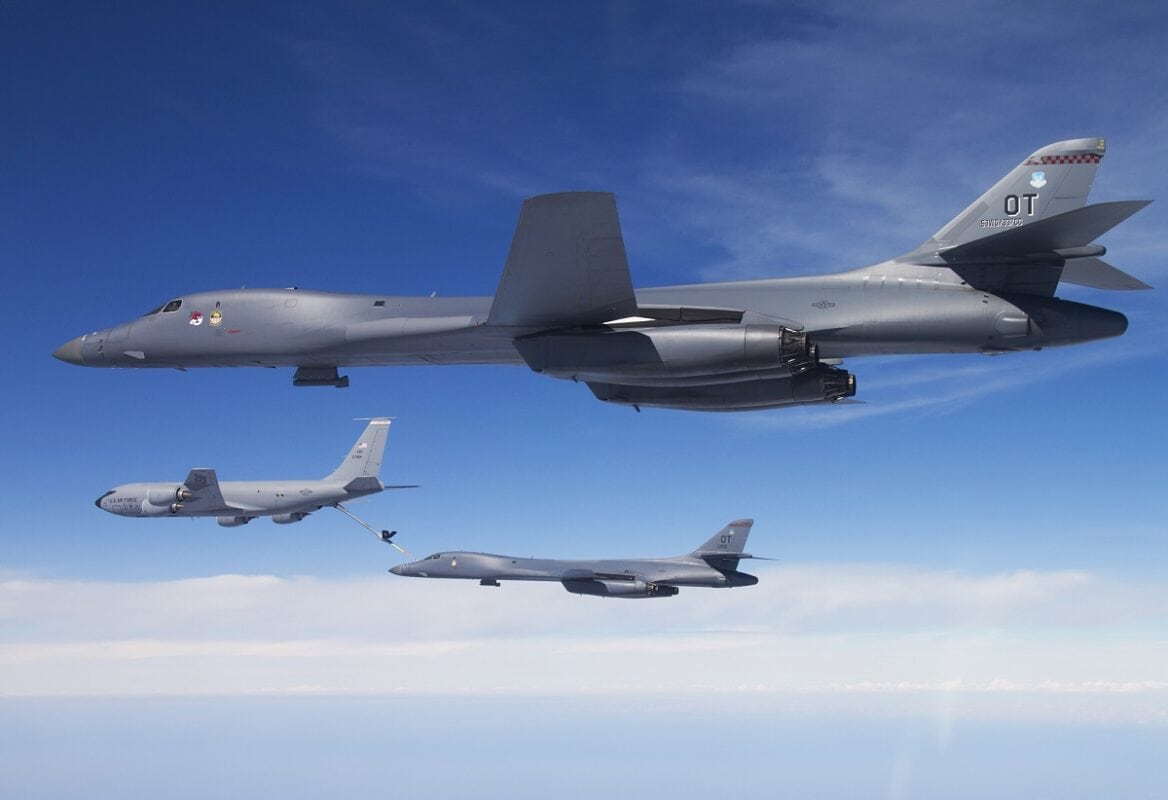
B-1B Lancer from the 337th Test and Evaluation Squadron stands by as another Lancer connects with a KC-135 Stratotanker for inflight refueling during a mission over the Gulf of Mexico near Eglin Air Force Base, Fla., Feb. 23, 2012. The 337th TES is a geographically separated unit of the 53rd Wing, which is headquartered at Eglin AFB. The 337th TES is responsible for operational testing of all B-1B defensive and offensive systems and weapons upgrades. (Courtesy photo/Jake Melampy)
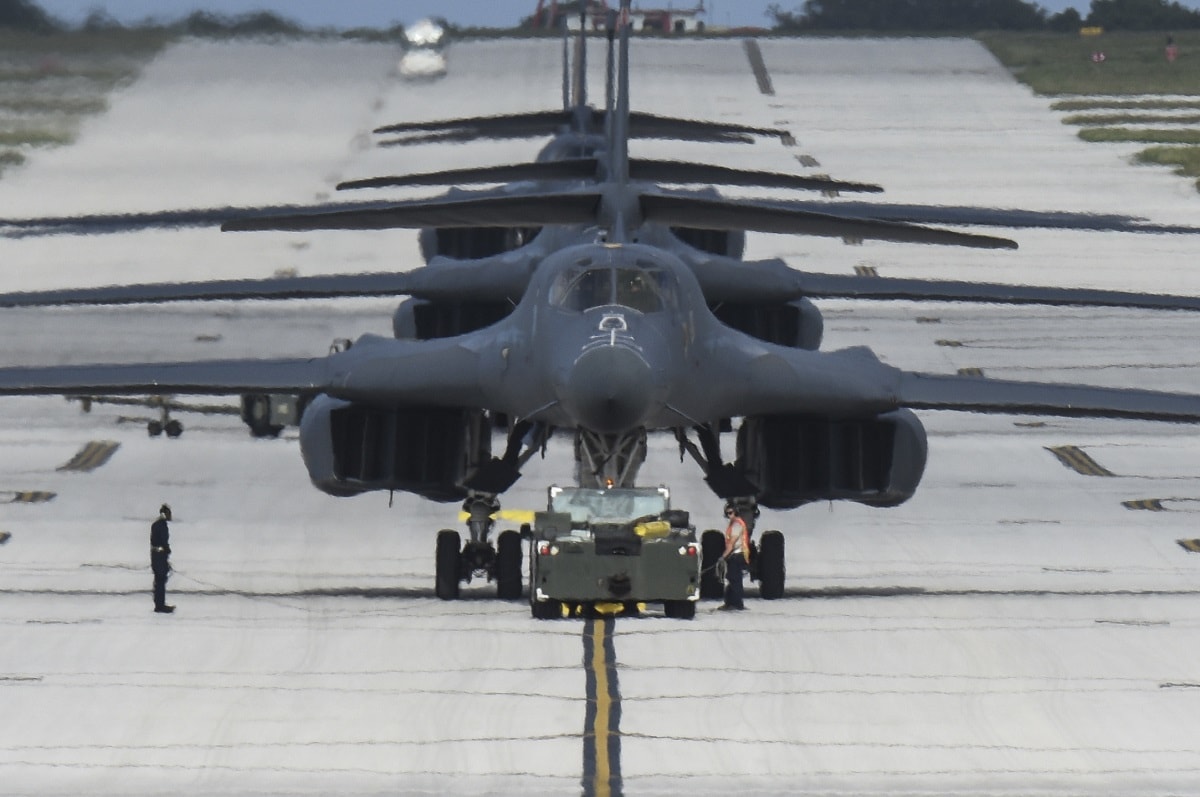
Four U.S. Air Force B-1B Lancers assigned to the 9th Expeditionary Bomb Squadron, deployed from Dyess Air Force Base, Texas, arrive Feb. 6, 2017, at Andersen AFB, Guam. The 9th EBS is taking over U.S. Pacific Command’s Continuous Bomber Presence operations from the 34th EBS, assigned to Ellsworth Air Force Base, S.D. The B-1B’s speed and superior handling characteristics allow it to seamlessly integrate in mixed force packages. These capabilities, when combined with its substantial payload, excellent radar targeting system, long loiter time and survivability, make the B-1B a key element of any joint/composite strike force. While deployed at Guam the B-1Bs will continue conducting flight operations where international law permit. (U.S. Air Force photo by Tech. Sgt. Richard P. Ebensberger/Released)
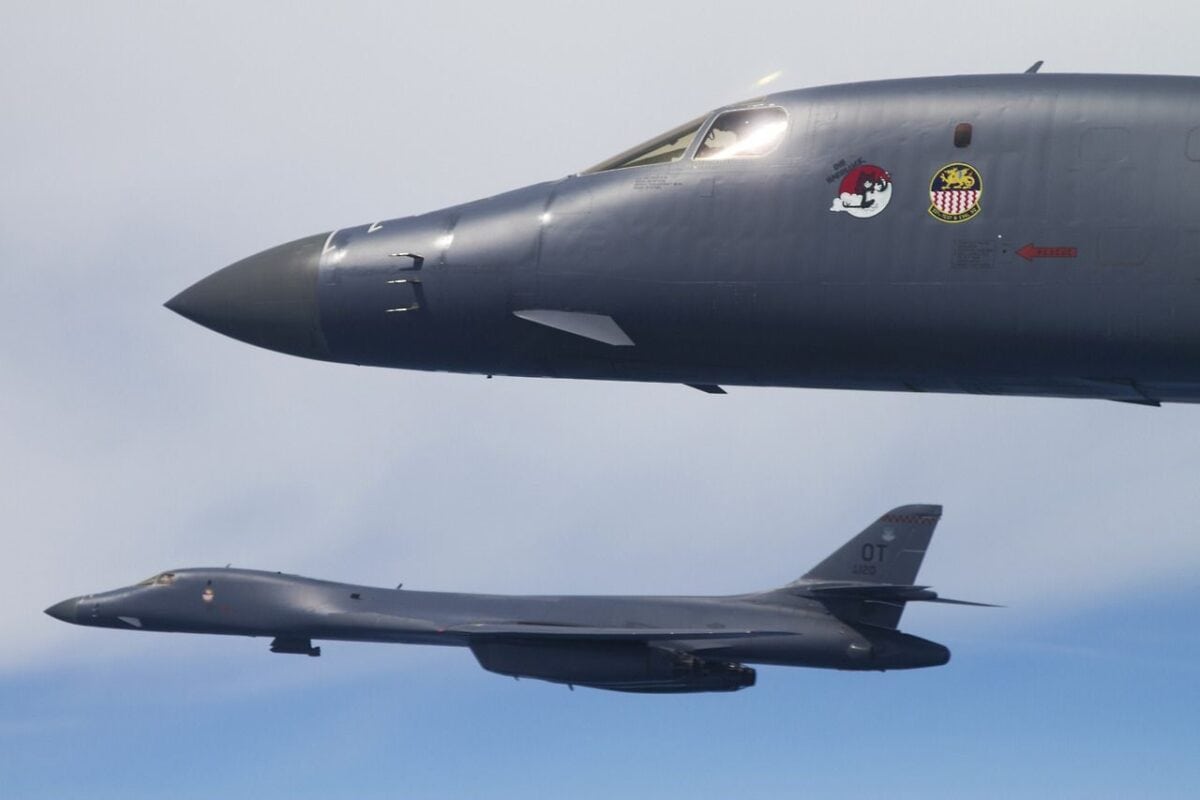
Two B-1 Bombers. Image Credit: US Air Force.
Today the B-1B is not armed with nuclear weapons, but it is still capable of carrying the AGM-86B air launch cruise missile (ALCM) and the AGM-69 short-range attack missile. The B-1s feature three internal weapon bays, as well as six external hardpoints over the fuselage – and the aircraft have a maximum internal weapons payload of 75,000 pounds and a maximum external weapons payload of 59,000 pounds.
Following recent retirements of the aging aircraft, the United States Air Force maintains a fleet of just forty-five B-1s. Despite having a reduced Lancer fleet, the bombers remain part of the service’s spearhead – and continue to effectively address the threats in an ever-changing world.
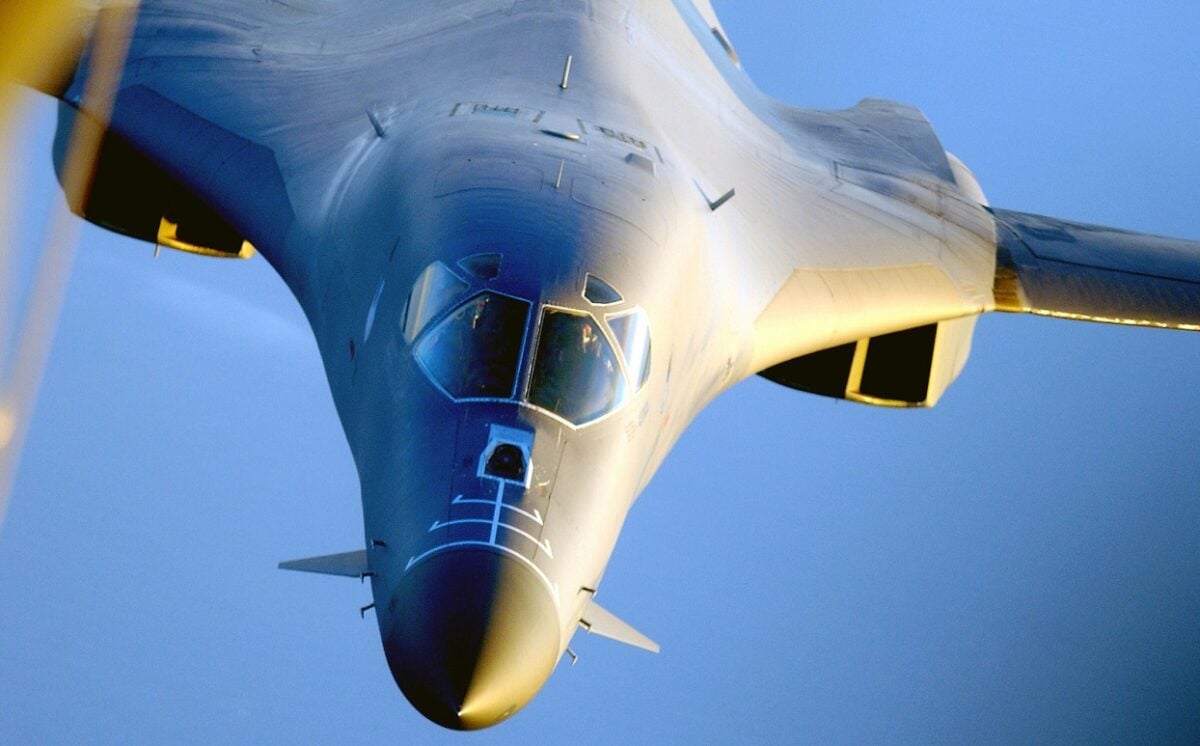
A B-1B Lancer from the 28th Air Expeditionary Wing (EW), maneuvers to receive fuel while on a bombing mission, in support of Operation ENDURING FREEDOM.
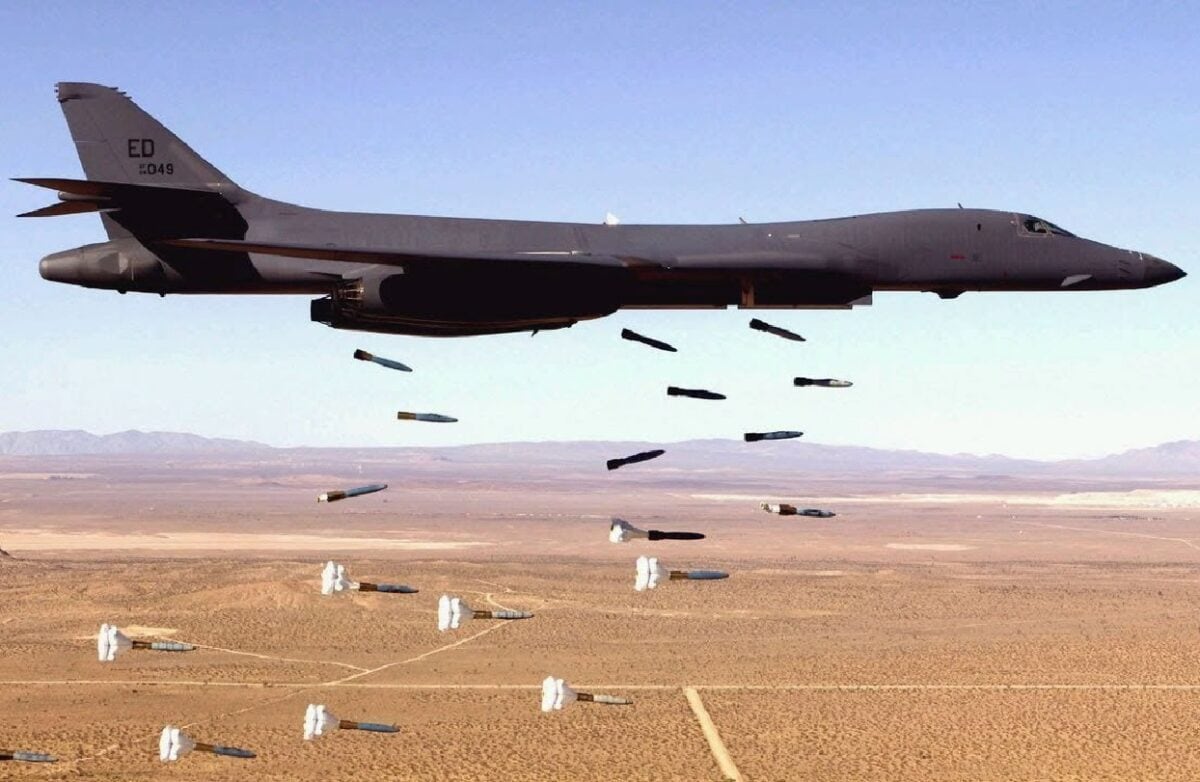
Image: Creative Commons.
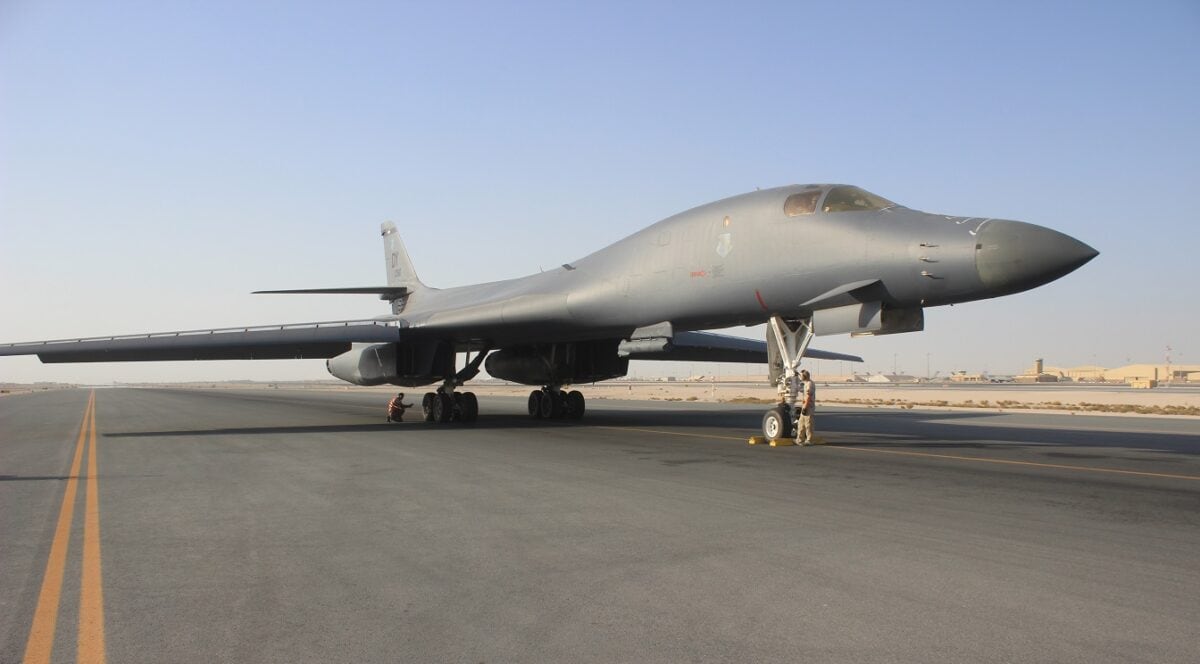
U.S. Air Force maintainers from Ellsworth Air Force Base, South Dakota, work 24/7 servicing and inspecting the B-1B Lancer. They are maintainers within the 379th Air Expeditionary Wing’s 34th Expeditionary Aircraft Maintenance Unit (nicknamed “the backbone of the bone”) and provide hundreds of thousands of manpower hours during six month deployments to Al Udeid Air Base, Qatar. Maintainers comprise approximately a dozen different career specialties to ensure the aircraft flies and meets mission throughout the Middle East. The Lancer carries the largest conventional payload of guided and unguided weapons in the Air Force inventory.
Now a Senior Editor for 1945, Peter Suciu is a Michigan-based writer who has contributed to more than four dozen magazines, newspapers and websites. He regularly writes about military hardware, and is the author of several books on military headgear including A Gallery of Military Headdress, which is available on Amazon.com. Peter is also a Contributing Writer for Forbes.

